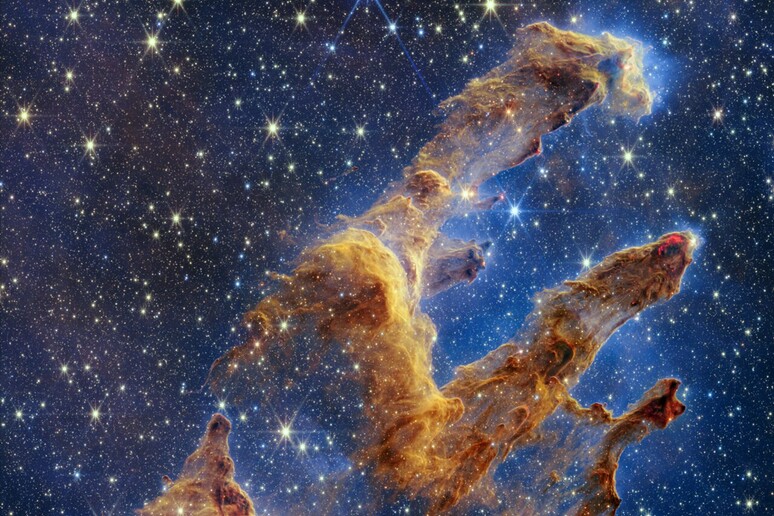There may be a planet, 124 light-years away, where the air is laced with life.
The observation, one of the most promising in modern astrobiology–made by the James Webb Space Telescope-detected two molecules in the atmosphere of the exoplanet K2-18 b: DMS dimethyl sulfide and DMDS dimethyl disulfide. On Earth these are produced exclusively by living organisms, particularly marine phytoplankton.
Scientists are quick to clarify that this is not direct evidence of extraterrestrial life, but rather a possible organic signature: a chemical hint that could stem from biological processes. If confirmed, the discovery would mark a turning point in the search for life beyond our solar system.
K2-18 b is classified as a “sub-Neptune” exoplanet, with a mass about 8.6 times that of Earth and a diameter roughly 2.6 times larger. It orbits a red dwarf star within the so-called habitable zone, the range of distances where liquid water could theoretically exist on a planet’s surface.
Its atmosphere, already known to contain methane and carbon dioxide, now shows possible signs of these two additional compounds, both part of the same chemical family and long considered potential biosignatures. Data collected by the James Webb Telescope indicate a 99.7% probability that one or both gases are present at concentrations thousands of times higher than those found on Earth. According to the study’s authors, such levels cannot be explained without biological activity, at least based on current scientific knowledge.
The research team, led by astrophysicist Nikku Madhusudhan of the University of Cambridge, described the finding as critical, the strongest signal yet of potential habitability beyond our planet. He emphasized that the true breakthrough lies in proving that current technology can detect biosignatures on potentially habitable planets: a concrete first step into the era of observational astrobiology.
Still, Madhusudhan warned against premature conclusions. He noted that observations must be repeated, statistical significance must be strengthened, and the possibility of non-biological mechanisms capable of producing DMS or DMDS in a planetary environment like K2-18 b must be carefully examined.
Other scientists not involved in the study have also urged caution. Christopher Glein, a researcher at the Southwest Research Institute in Texas, called the outlined scenario an intriguing target, but stressed the importance of subjecting the data to thorough scrutiny.
Astronomers estimate that over 5,800 exoplanets have been identified so far. Among these are the so-called hycean worlds, hypothetical planets covered in warm oceans and enveloped in hydrogen-rich atmospheres which are considered prime candidates for hosting microbial life. K2-18 b, based on its composition and characteristics, appears to fit well within this category.
According to Madhusudhan, if life does exist on these celestial bodies, it would most likely be microbial, similar to life forms in Earth’s oceans. When asked about the possibility of multicellular organisms or intelligent life, he explained that no conclusions can be drawn at this stage, and the working hypothesis remains that of simple life structures.
Science, like truth, takes patience.












